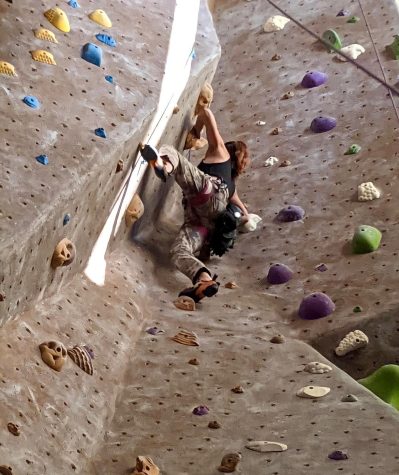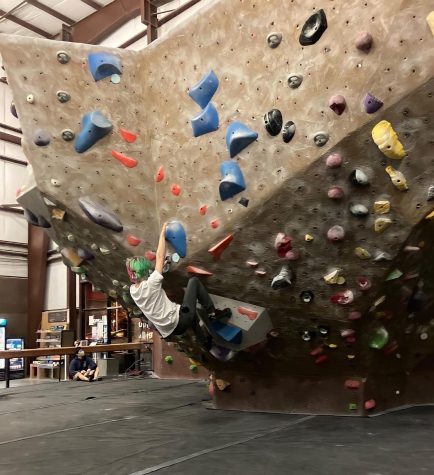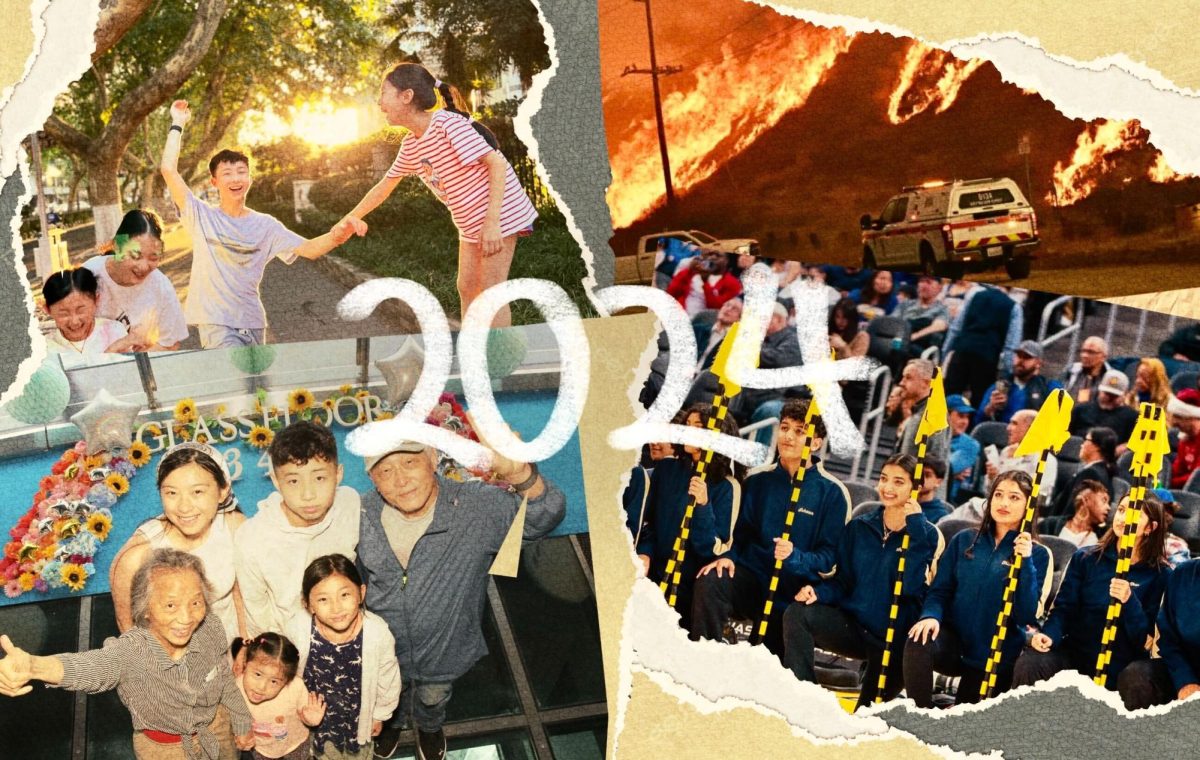Scaling the rock wall
Exploring the journeys of three student rock climbers
February 1, 2022

With nothing but a carabiner securing them onto the side of a boulder on top of a mountain in Donner, MVHS alum Maya Tate ‘20 glances at the valley from above while faced with heavy wind striking their side. Armed with the support of their friend and well-known climber Steve Schneider, Tate’s ability to trust their gear was a “big confidence booster” that was both freeing and rewarding.
Tate started climbing “as soon as [they] could walk,” and says that they are grateful for having met Schneider because it can sometimes be difficult to find consistent partners to climb outdoors with. Tate mainly climbs with their father and friends, and though they have recently been climbing at their gym three to four times a week, they “love climbing [outdoors] the most.”
“One of the big things that I get to take away and learn is how my body works,” Tate said. “It’s given me an awareness of the way my body moves and what it can do — that’s really unique to having done the sport. And there’s also a lot of trust that I’ve had to learn and develop that you have to place [in] other people and gear.”
In the last year, Tate has been cross-training more regularly, dedicating themself to the sport as opposed to climbing casually. Similarly, junior Robin Ready first went rock climbing at 11 years old but has only consistently practiced the sport for the last six months. They share that the sport is a good form of upper body training and that they climb three times a week at the gym Movement, hoping to eventually climb competitively.
As Ready increased their strength and confidence, they began studying higher climbing routes. Whether it is the fear of heights or the “sketchy” nature of higher routes, they share that the most difficult part of rock climbing is “committing in the moment.”

Junior Brooke Frei, who started climbing three months ago and practices once or twice a week, enjoys bouldering, or climbing closer to the ground without a harness. Frei agrees with Ready that climbing can be intimidating since there is only a mat in case she were to fall. To overcome her fears, she “just [goes] for it [since] there’s no way to get over it without actually doing it.”
Frei says the first time she fell while climbing without a harness was a great learning experience that was “even more rewarding than finishing the climb normally is.” Throughout her time climbing, she has understood the importance of using both strength and strategy to scale the wall.
“[Rock climbing] feels like a puzzle, where your physical strength is important, but how you do it and your proper form is also just as important,” Frei said. “But I also do enjoy the feeling of being up at the very top of the wall. And it’s very satisfying when you clock in once you finish a climb.”
Tate agrees that focusing on “the puzzle” and gear is essential to completing the route and not falling. To them, focusing is a tool they use to stay centered on climbing that also acts as a “good distraction” from their world outside of rock climbing. They also note that they have a group of transgender friends who also rock climb, providing them with a sense of belonging in and out of the gym.
“This sport has given me a community,” Tate said. “It’s given me slightly larger biceps. It’s given me an outlet for how I feel. And it’s given me a form of meditation that I really appreciate.”



























